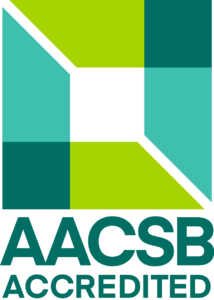Database Systems I
- Credits: 6
- Ending: Examination
- Range: 2P + 2C
- Semester: winter
- Year: 2
- Faculty of Economic Informatics
Teachers
Included in study programs
Teaching results
After completing the course, students will have:
Knowledge
A. know the principles and role of database systems
B. understand the process of effective data organization, protection and management
C. understand relational algebra and how queries are performed in relational databases;
D. understand the principles and techniques of concurrent work in database systems
Skills
E. analyze business requirements and, based on the results of the analysis, design and implementa standardized, relational data model;
F. work with SQL language in defining, manipulating, and updating data, as well as controlling access to database objects.
G. Work with selected DBMSs;
Competence
H. Administer selected DBS at a moderate level.
Indicative content
Course content:
1. Introduction to the subject, history of information storage
2. Reality modelling, ANSI / SPARC architecture, conceptual models.
3. Entity-relationship model.
4. Data models, relational data model.
5. Transformation of conceptual models into logical data models.
6. Normalization and normal forms of relations.
7. Methodology of relational databases design.
8. Physical data models and their implementation in DBS.
9. Relational languages.
10. Data protection in database systems and principles of transaction processing.
11. Concurrency in DBS.
12. Object Oriented DBS.
13. DBS architectures
Support literature
1. Friedrichsen, D., Ruffolo, J., Monk, E., Starks, G., Pratt, P., & Last, C. (2021). Concepts of database management (10th ed.). Cengage. ISBN 978 0357422083
2. Silberschatz, A., Korth, H. F., & Sudarshan, S. (2019). Database system concepts (7th ed.). McGraw Hill. ISBN 978 0078022159
3. North, S. M., & Xu, X. (2021). Introduction to database systems. University System of Georgia.
4. Elmasri, R., & Navathe, S. B. (2019). Fundamentals of database systems (7th ed.). Pearson. ISBN 978 0137502523
Syllabus
1: Introduction to the course, history of data storage • Development of data storage systems • Motivation for using databases • Role of databases in information systems 2: Modeling reality, ANSI/SPARC architecture, conceptual models • Three-level database architecture • Data abstraction and modeling • Conceptual model creation 3: Entity-Relationship Model (ERM) • Entities, attributes, and relationships • ER diagrams in tools (e.g. dbdiagram.io, draw.io) • Identifying keys and cardinalities 4: Data models and relational data model • Comparison of hierarchical, network, and relational models • Mapping between ER and relational models • SQL and relational algebra overview 5: Transforming conceptual to logical data models • ER-to-relational transformation rules • SQL table definitions and keys • Practice with schema implementation 6: Normalization and relational normal forms • 1NF, 2NF, 3NF, BCNF definitions • Redundancy and anomalies • Case studies in table normalization 7: Methodology of relational database design • Stages of database design • Identification of business rules • Group project: design based on a case study 8: Physical data models and implementation in DBS • Database schema deployment in MySQL/PostgreSQL • Column types, indexing, performance • Benchmarking different structures 9: Relational languages • SQL: DDL, DML, DCL • Relational algebra operations • Querying exercises with SELECT, JOIN, etc. 10: Data protection and transactional processing • Transactions, ACID, locks • Conflict handling and rollback • Practical exercises with transactions 11: Concurrency in database systems • Concurrency issues: deadlock, starvation • Locking protocols and isolation levels • Simulation of concurrent queries 12: Object-oriented database systems • SQL extensions for object modeling • Stored procedures, triggers, object classes • Demonstration in PostgreSQL or Oracle 13: Database architectures • Centralized, distributed, cloud databases • Scalability and replication • Review and comparison of architectures
Requirements to complete the course
60 % final exam: the exam consists of two parts: a test and an open task to design the database structure for the given environment. The test verifies the achieved level of learning outcomes A., B., C., D., by solving the task, the achieved level of learning outcomes E. and F are verified.
40 % assignments: The content of the exercise is the elaboration and defense of an individual project of database design and implementation in the selected DBMS with SQL interface through several assignments, which are evaluated separately. The overall evaluation is the sum of the points obtained for individual tasks. Through these assignments, the fulfilment of the learning outcomes E., F., G., H. is assessed.
Student workload
Total study load (in hours): 6 credits x 26 hours = 156 hours
Distribution of study load
Lectures and seminar participation: 52 hours
Preparation for seminars: 13 hours
Written assignments: 51 hours
Final exam preparation: 40 hours
Language whose command is required to complete the course
slovak
Date of approval: 04.03.2025
Date of the latest change: 06.11.2025

